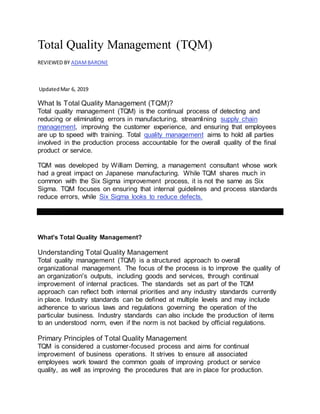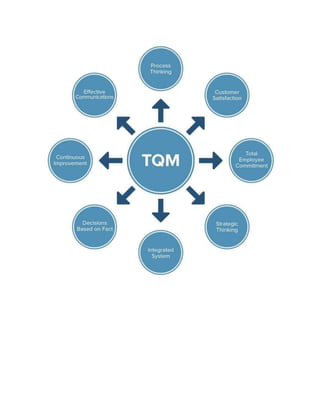Total Quality Management (TQM) is a continual process that aims to improve quality in manufacturing by reducing errors, streamlining supply chains, improving customer experience, and ensuring well-trained employees. It holds all parties accountable for quality and was developed by William Deming, influencing Japanese manufacturing. TQM focuses on internal guidelines and process standards to reduce errors, while the related Six Sigma method focuses on reducing defects.

![[Important: Special emphasis is put on fact-based decision making, using
performance metrics to monitor progress. High levels of organizational
communication are encouraged for the purpose of maintaining employee
involvement and morale.]
Industries Using Total Quality Management
While TQM originated in the manufacturing sector, its principles can be applied to
a variety of industries. With a focus on long-term change over short-term goals, it
is designed to provide a cohesive vision for systemic change. With this in mind,
TQM is used in many industries, including, but not limited to, manufacturing,
banking and finance, and medicine.
These techniques can be applied to all departments within an individual
organization as well. This helps ensure all employees are working toward the
goals set forth for the company, improving function in each area. Involved
departments can include administration, marketing, production and employee
training.
Key Takeaways
Total quality management (TQM) is the continual process of detecting and
reducing or eliminating errors in manufacturing, streamlining supply chain
management, improving the customer experience, and ensuring that
employees are up to speed with training.
The focus of the process is to improve the quality of an organization's
outputs, including goods and services, through continual improvement of
internal practices.
Total quality management aims to hold all parties involved in the
production process accountable for the overall quality of the final product
or service.](https://image.slidesharecdn.com/casestudytqm-191110071334/85/Case-study-tqm-2-320.jpg)






